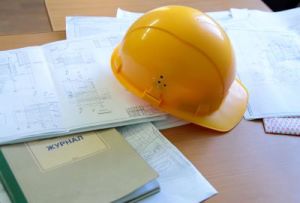 Legislation for work safety in heritage buildings can be a daunting task. The present Occupational Health and Safety laws mandate personnel who carry out construction activities of heritage buildings to be conscious in protecting health and be conscious of safety risks from design phase throughout the life cycle of the building up to the end user.
Legislation for work safety in heritage buildings can be a daunting task. The present Occupational Health and Safety laws mandate personnel who carry out construction activities of heritage buildings to be conscious in protecting health and be conscious of safety risks from design phase throughout the life cycle of the building up to the end user.
As a rule of thumb, the construction of new structures utilises building codes and regulations. It is also used to existing structures when the building requires major renovations or perhaps a different use of the building.
Administrative regulations play a significant role in shielding the community from natural losses with standards to prevent losses resulting from structural collapse, natural hazards, or fire. Structural failure, fire, hygiene, and indoor air quality are utilising building codes and regulations within the parameters of Occupational Health and Safety. Issues regarding protection of human rights like building access for the disabled were also being addressed.
A famous work safety incident recorded in history was the eight storey commercial building that collapsed in Bangladesh last 24th of April. This emphasises the importance of building codes and regulations. This aims at mitigating a big hazard (one-off catastrophic) rather than the end user hazards (occupational nature).
Control of latent dangers and its identification are critical roles played by developers, clients, tenants, building owners and designers like architects, industrial designers, safety professionals, construction workers and engineers. Efficient coordination of all stakeholders is key to a safer work environment and safe outcomes and these do not happen overnight through sheer guesswork planning.
It is vital to determine and foresee what can go wrong and its consequences and to properly communicate those who are affected by the hazards. All stakeholders must be aware of what part of their activity that it could likely stimulate safety risk.
A simple and more systematic process was identified in order to determine risks associated with heritage buildings by answering the following:
- What could cause harm (Identifying hazards)
- How serious the harm could be and the likelihood of it happening (Assessing risks)
- Implement an effective control measure that is reasonably practicable (Controlling risks)
Information transfer is important towards effective risk management and thus this process must be properly documented.
Clients, developers, building owners, occupiers, design professionals such as architects, engineers, industrial designers, health and safety professionals, construction workers and users all have a role in the identification and control of the existing latent hazards. A safe work environment and effective safety outcomes do not happen by chance or by guesswork planning but through the effective coordination of all the relevant stakeholders.
High-risk areas that may cause occupational hazards include:
- Structural failure
- Fire
- Manual handling and ergonomics
- Use of hazardous materials (Lead paint, asbestos, PCBs etc.)
- Indoor air quality
- Walk ways and stair cases
- Exiting base building electrical wiring.
Building structures have different levels and items of heritage importance. Not to mention, it exists within different environments and settings. There is no single solution to this problem. Each case is different from the other and needs to be evaluated based on its own merits, and that's the time the most efficient set of solutions will be found.
This issue is not well discussed in the engineering literature. It is not readily available. A lot of publications and procedures regarding refurbishment of buildings and its preservation or modification are available but rather more of discussing environmental sustainability and its accessibility for the disabled.





